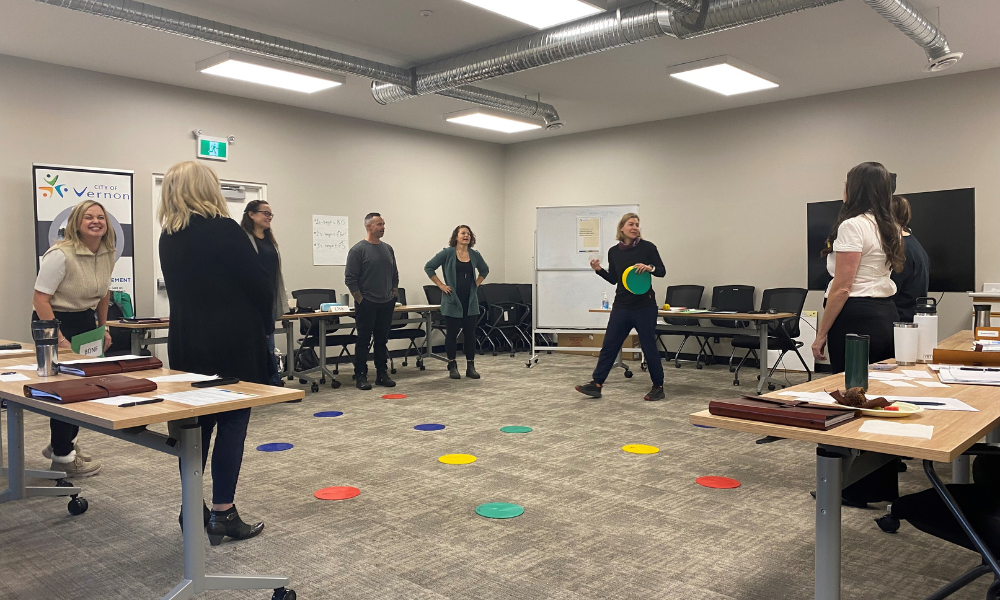
'The pessimist complains about the wind; the optimist expects it to change; the leader adjusts the sails'

With the how, the where and the way we work constantly shifting, employers are having to rely more heavily on well-integrated HR technology.
In B.C., the City of Vernon’s Joanie Clary understands this better than most. As the senior advisor of talent management and development, she says that their internal programs have had an enormous impact on their culture – provoking an emotional response from their people.
“We recently have implemented Workday. And for our organization, which was largely using old software and Excel, the technological change for folks was huge. Our project management team was experiencing a lot of high emotions from all across the organization. Within a week and a half, we developed an engaging, thought-provoking presentation using the BOPPPS Model, that included strategies our leaders could use to address.”
At the heart of Clary's presentation was a quote from John Maxwell: "The pessimist complains about the wind; the optimist expects it to change; the leader adjusts the sails."
This sentiment set the tone for a discourse not just on technological change, but on personal and organizational growth. Leveraging the Kubler Ross change curve, initially developed to understand grief's emotional journey, Clary drew parallels with the organization's ongoing technological transition.
“Organizations have actually used it when they are going through technological change,” she tells HRD. “We also discussed the growth versus the fixed mindset. And by sharing those, the change curve and the growth versus the fixed mindset along with their characteristics, they could use [them] to understand what was behind the emotions and assist in moving employees through to the next stage.”
By dissecting these mindsets and the stages of the change curve, Clary believes pathways were illuminated through which staff could be coached from resistance to acceptance, fostering an environment ripe for growth and learning.
"It really highlighted the requirement and value for coaching,” she adds.
The feedforward as opposed to feedback was overwhelmingly positive, with the language of resilience and adaptability infiltrating crew talks and one-on-one coaching sessions. However, Clary admits that the implementation wasn’t without its challenges around tracking metrics.
“We definitely know we could do a better job here,” she tells HRD. “We also know that once we have the Learning Module in Workday up and running, we will have that data and be able to track and report in a better way.”
Despite these technological constraints, the City of Vernon has found success in measuring the impact of its L&D initiatives through more qualitative means.
"One of the best ways that we measure is through demonstration of the skills: Are people applying them? Are they using those behaviour changes, are they aligning with our core values, are they engaging?" Clary explains.
Increased participation in programs and a growing demand from employees to be included in L&D opportunities signify a thriving culture of learning within the organization. Clary recounts stories of divisions that had often experienced challenges with one another for years, finding common ground and solutions through shared learning experiences.
"Hearing our folks share that there have been issues between divisions for years – and then when they come together in a program, develop relationships and recognize that they care about each other – and that this is the catalyst for them getting together, discussing and resolving problems, is a brilliant outcome of learning together.
“Collaboration and building relationships outside of the learning and development is one of many benefits that collectively can result in improved culture, an increase in innovative solutions, and increasing skills.”

This passion for learning and development emanates throughout the City of Vernon’s entire culture. Clary explains that she and her team deploy contemporary learning environments, incorporating adult learning principles with a plethora of experience and education to engage employees in sharing, contributing and participating.
"Contemporary learning environments are all about the learner," she tells HRD. “[They] include structures and instructional strategies that provide for the right hemisphere of our brains to do what it does best - to ponder, reflect, imagine, intuit, sense and connect the dots.”
Clary is a big fan of Stephen Brookfield, who believes that contemporary learning environments are those in which skilled teachers and facilitators do whatever is required to help learners learn to develop a critically reflective stance.
“We know that reflection is the bridge between the right and the left hemispheres of the brain,” she adds. “As contemporary facilitators, we want to be constantly aware of how our learners are experiencing their learning.”
And, at the core of Vernon's L&D initiatives is the BOPPPS Model - a strategic framework that begins with the end in mind, focusing on what learners should be able to achieve post-training. This outcome-based planning sets the stage for defining clear learning objectives, incorporating pre-assessment activities that gauge learners' existing knowledge and tailoring the learning experience to meet their specific needs.
“Then we get into the participatory and the presentation,” says Clary. “That’s where we share content, and this includes cutting down on explaining, along with developing and using a variety of instructional strategies that are active and participatory, to ensure the learners are solidifying the learning through practical applications, discussion and role playing demonstrations to name a few. [Finally] we post-assess and then summarize.”